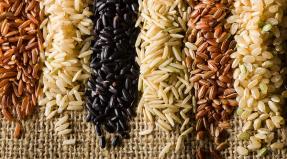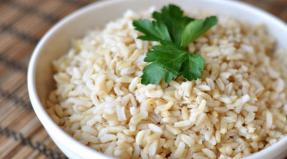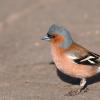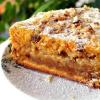How black elderberry grows. Elder black care and cultivation. Elderberry care rules
Black elderberry is a shrub common in forests. But, nevertheless, there are also cultivated species of it, successfully used as ornamental plants in gardens and home gardens.
Black elderberry is found as a shrub or tree with ornamental leaves, lacy inflorescences of fragrant flowers and elegant black fruits. In height, it can reach from 3 to 7 m. This long-lived plant grows up to 60 years. In nature, black elderberry is found in northern Africa, temperate zones of Asia, Europe and the Transcaucasus. Today, a large number of decorative types of elderberry are used in landscape design:
- pyramidal with a columnar crown;
- weeping with drooping branches;
- low in the form of a small ball up to a meter high;
- fern-leaved with thin split leaves with a musk aroma;
- porphyry with purple or black leaves and pink flowers;
- golden-motley, white-motley or powdery and many others.
Black elderberry can be planted by sowing fresh seeds. This is done in the fall by sowing directly into the ground. You can sow elderberry seeds in the spring, but only after 3-4 months of stratification. Also, black elderberry is perfectly cut. The ideal time for this would be the end of June or the beginning of July. It will be possible to plant cuttings directly into the ground in the fall. Elderberry is also easily propagated by layering.
Growing conditions for black elderberry
Elderberry is a photophilous plant, so it is better to plant it in sunny places. In this case, its foliage will be rich and bright, especially in decorative forms. In addition, she loves fertile and fairly moist soils. Do not plant elderberry in places unprotected from cold winds with little snow cover in winter.
black elderberry care
Adult representatives of elderberry are recommended to rejuvenate. The best time for this is early spring. To stimulate the extensive growth of new shoots, it is enough to cut off a third of the old shoots.
Elderberry also loves organic fertilizers, but it is best to do top dressing in early summer. In this case, the new shoots will have time to stiffen and not freeze in winter. However, organic matter can also be added in late autumn, pouring it in a small layer into the near-trunk circle. Thus, they also insulate the root system of elderberry.
Diseases and elderberry black
When touched, elderberry leaves emit a characteristic odor. It is believed that harmful insects do not like it even on nearby plants. Therefore, elderberry has few pests, but they still exist. These include the elderberry mining fly and the elder leaf mite. Spraying with karbofos, decis or kinmiks will help get rid of the first, spraying with metak or fitoverm will help to get rid of the second.
Since ancient times, black elder was considered a sacred tree. In modern medicine, its medicinal properties are used in the treatment of many diseases. To do this, they collect, dry or dry, store and use its leaves, bark, roots, flowers and berries.
Black elderberry is used for medicinal purposes because of its high content of ascorbic acid and essential oils, glycosidic substances and tannins, sugar and choline. Traditional medicine uses elderberry to treat rheumatism, colds, bowel diseases, sciatica, stomach, gout, skin diseases, kidney disease and many other diseases.
In ordinary life, from the berries of this plant, you can cook very tasty and most importantly healthy jams, jelly, syrups, compotes, mousses, jams and even berry wine.
Black elderberry is certainly not a typical ornamental plant for garden decoration, but it can be a wonderful addition to the most exquisite landscape. Its beauty will first manifest itself in huge inflorescences of small and fragrant yellowish-white flowers, which will delight in flowering for three weeks. Then - in blue-black fruits, which will decorate a branchy bush with dark green large leaves with umbrellas.
Elderberry is an artisanal plant, which has more than 40 different species, but only a few can be cultivated.
Often, elderberry is an excellent way to decorate the site. If you plant it wisely, you will get a very good style of territory. Experienced gardeners use elderberry as the main force to resist various pests. Practice shows that this business often requires only planting a few shrubs in order to forget about those very annoying organisms.
Accordingly, elderberry is often planted near barns, which creates good conditions for repelling pests.
If we talk about the places where elderberry is most often grown, then it is worth noting Europe and some eastern CIS countries. In these places, the plant simply demonstrates colossal growth, which is why elderberry is so common among gardeners.
In this article, we will consider the main issues related to planting and growing elderberry in our area. Moreover, we will not bypass the care of this plant, as well as pests and diseases that create many problems for elderberry.
Plant features
As we have already said, elderberry is often planted as a good decorative element for any site. As practice shows, this is indeed the case, given the rather original appearance of the plant, as well as those same black berries growing on pink branches.
- We also mentioned that elderberry resists quite well various pests that can be active within the site. This is a really relevant way to deal with the very creatures that destroy the crop. Of course, one should not expect 100% efficiency from elderberry, but often it completely satisfies the owners.
- At the same time, elderberry is actively used for medical purposes. It has long been indicated in herbalists that medicines are created on the basis of elderberry, which are excellent diuretics. In addition, the plant is a good anti-inflammatory, disinfectant, and also a diaphoretic. Surprisingly, sometimes elderberry is used in cases of inflammation of the vagina.
- Kissels are created on the basis of elderberry, which allow you to forget about constipation and other digestive problems.
- For traditional medicine, the plant is also an indispensable remedy for rheumatism, gout and inflammation of the joints. It is possible that elderberry does not help in these matters as quickly as modern medicines, but the positive effect is still present.
- At the same time, decoctions are prepared on the basis of elderberry, which are considered useful in diabetes.
- If we talk about traditional medicine, then there are simply no official data related to the effectiveness of the above funds. However, it is still safe to say that elderberry is the same plant that has many positive medical properties, and which it is a sin not to use if there is such a need.
- It should be noted that elderberry is also actively used in the food industry. Moreover, on the basis of this plant, almost any food product can be made. It can be jam, jelly, original drinks, pies. Elderberry can also be used in the production of food coloring.

Place for planting elderberries
The choice of planting site for elderberry is an urgent issue. As is the case with any other plants that are used as a decorative element for the site, the elderberry also needs the most favorable place for active development.
Fortunately for many gardeners, this plant is unpretentious to the site where it was planted. But at the same time, it is advisable to choose favorable places, since, for example, in those areas where the soil is too poor, elderberry will not grow very actively.
Experts advise making a choice in favor of loamy soils, which, among other things, are distinguished by sufficient moisture.
It often happens that the site has acidic soil. This is not the best news for which you need to prepare in advance. In about a couple of years, liming the soil should be done, which will allow planting elderberry and enjoying its active growth.
Also, experienced people note that about a month before planting elderberry, it is necessary to prepare the soil, and for this, first of all, you need to get rid of weeds. Mineral fertilizers will not be superfluous, which will somewhat accelerate the growth of elderberry.
Of course, there were cases when no fertilizers and the like were used, and the elder grew quickly and gained considerable size. This situation suggests that the plant is really not too demanding on the existing conditions, and at the same time, it should not be ruled out that the material will not suffer from the absence of various components necessary for positive development in a not the best area.

Choice of elderberry variety
Most often, within the CIS countries, the owners make a choice in favor of black or red elderberry. The strength of these varieties is their attractive appearance, which simply attracts the attention of people around them. In addition, these plants are excellent for garden plots, perfectly complement the available space.
Important is the information that red elderberries are poisonous. Accordingly, everything possible must be done so that this does not constitute any problems. Thus, black elderberry is often found, as it is completely safe.
There are also several forms of elderberry:
- Weeping. Such a shrub differs from many others in that it has branches lowered to the ground.
- Low. Based on the name, it becomes clear that this elderberry is a really low shrub, which is distinguished by rather large volumes of leaves. It turns out something like a spherical plant.
- Paramidal. Also from the name it is obvious that the bush has the shape of a pyramid.
- Fern-leaved. In this case, the elderberry has large leaves that create a worthy decoration for the whole plant. Of course, this is an excellent solution for areas in which you need to create an attractive landscape. The height of the shrub can reach 2.5 m.
- Powdery. These are shrubs that are not so common, but their appearance often pleases the surrounding people. The leaves of this plant have small white dots, as well as miniature spots.

elderberry reproduction
Nowadays, elderberry propagation is usually carried out using seeds or cuttings. In the first case, it must be borne in mind that when planting, the features of the shrub from which the seeds were taken will be lost. Accordingly, the plant will develop in accordance with the existing conditions.
- Seeds are collected in the autumn, after which they are planted in beds in increments of 25 cm. The sowing depth plays an important role, so this value should be within 2-3 cm. If everything is done correctly, then by the end of the upcoming season, the shrubs will reach height of 50 cm, and maybe more.
- Cuttings in horticulture are used no less than sowing seeds. First you need to take planting material, and this is part of the elderberry. Accordingly, we divide this part into several cuttings. Each cutting must be divided into 2 or 3 internodes. After that, the cuttings need to be transplanted into the greenhouse. In this process, it is important to sprinkle the topsoil with a mixture of peat and sand. This will improve the conditions for the development of the plant. It happens that the shoots used for planting are already stiff. In such cases, during the winter season, it is required to store them in the cold (this can be a basement or just a street). After that, in the spring, the plant is planted in fertilized soil.
Planting process of elderberry
Planting on the site should be a one- or two-year-old plant. In such cases, there is a high probability that it will take root and will actively develop. Experts advise planting elderberry in the northern or eastern corners of the site. In addition, to ensure excellent pollination, you need to plant elderberry next to many other plants.
The planting process should take place exclusively in the warm season. It may be autumn, but it is desirable that the weather be warm, similar to summer.
For planting, pits are preliminarily created, the depth of which must correspond to the size of the elderberry root system. Obviously, for each individual case, the pit will be different. The pit should also contain fertilizer mixed with the soil. It is most effective to use up to 8 kg of humus. Along with this, you can use up to 50 g of potash fertilizers and the same amount of phosphorus.
It is necessary to bury shrubs up to the root neck. It will not be superfluous to use a bole, which is an ordinary stake fixed in the soil.
Immediately after planting the elderberry, it is necessary to water the plant. Moreover, experienced gardeners note that for a long time, namely until the moment the plant takes root, it is necessary to control the soil moisture around the plant. Dry soil will mean that the plant will not last long in such conditions.
The specifics of elderberry care
As we mentioned earlier, elderberry care is not too voluminous. This plant is unpretentious to the existing conditions, and often shows active growth without the use of fertilizers and other human interventions.
However, experts advise at the beginning of summer to produce a small top dressing based on organic fertilizers. However, the amount of fertilizer must be small, otherwise it is a waste of money.
As for watering, it is often not required at all if it regularly rains or other precipitation. However, there are times when it doesn't rain for weeks at a time. Under such conditions, elderberry can be significantly affected. Therefore, during the drought period, watering is carried out. These may not be regular events, but even occasional watering is useful.
We have already mentioned that elderberry easily resists various pests located on the site. The situation is such that this does not always happen, so it is worth considering the situation associated with pests separately.

Pests and diseases of elderberry
- Tailed moth. This pest is a butterfly that can actively absorb elderberry leaves. Most often, this pest does not pose a particular threat, but on sale you can find special compounds that allow you to get rid of them.
- Elder leaf mite. It is also a pest that slowly but surely destroys shrubs. On sale you can find the appropriate compounds that process the plant. In addition, compositions are known that are more related to the developments of the gardeners themselves. Often there is no effectiveness from such decisions, so it is better to immediately contact one or another store for an effective remedy.
- Elderberry miner fly. This pest in its effect is an analogue of the two previous ones. It also actively infects many vegetables, so for gardeners, the fly can be more than a serious threat that wanders from one plant to another. It has a tiny size, but is able to cope with elderberry leaves quite easily. If you do not respond in time, the plant will become unusable. The fly lays eggs, so gradually the number of these pests will only grow if you do not start acting in time.
For planting choose areas of soil with good moisture content and suitable for fertility. For 1 year, acidic soils lime. Elderberry is planted from the north or east at the level of the root collar. Pits for planting are dug half a meter deep with a distance of one and a half meters.
After planting, the upper part is cut to 200 mm. It is necessary to remove broken and dried branches. Leave strong and straight shoots. They remove the crown and rid the bush of branches that have already given fruit. Then she needs abundant watering.
Care
The first two years the soil needs special care: remove weeds, regularly hill the ground. The areas between the bushes are equipped with a layer of organic and inorganic mulch to prevent evaporation. Elderberry is very susceptible to fertilizers containing nitrogen.
The regularity of the process of fertilizing the soil depends on the level of nitrogen and nutrients in the shrub. A lawn is formed between the rows, the cut grass is left as the same mulch.
The crown height must be maintained up to 2500 mm. The bush should consist of branches of different ages, but two or three year old branches must dominate.

Important! In no case should you harvest with branches, since the axis of the inflorescences contains a toxic substance. It is separated from the fruit and removed.
black elderberry reproduction
Black elderberry is planted with seeds (which is the easiest), layering (shoots) and cuttings. Seeds are sown before winter. And cuttings are taken both with the onset of spring, and green ones at the beginning of summer.
In order to grow new shrubs you like, you need to cut and root cuttings of the plant in the summer. Before cutting, it is necessary to treat with special growth stimulants.
Reproduction by layering is considered a fairly convenient and effective way. With this method, the young shoots are slightly bent and laid in grooves. After a year, they are separated, shared with the native original plant.
When it comes time to plant elderberry, you need to carefully consider the following points:
- do not deepen the neck;
- plant on a level with the ground;
- work with the soil (prepare the desired soil with peat, sand, soddy soil and humus in a ratio of one to one and two to two).

Due to the high content of alkaloid, black elderberry is practically not subject to pest attacks. But the danger is still there:
- insects (leaf mite, tailed moth, mining fly). The moth feeds on the leaves of the plant, and the fly lays eggs and they spoil it. To get rid of use the drug Fufanon;
- aphid (it settles on the tops of the bush). It is treated with voloton, cyhalothrin, fozalon. But if there is little pest on the plant, then there is no need to poison it with pesticides.
Planting seeds
Seeds for planting must be collected at the end of October. You can plant in spring or autumn. The depth of the pits should be 20–25 mm. With such sowing, at the end of the season, the sprouts will reach 600 mm. Elderberry begins to sprout in the month of April.
Important! If planting is planned in the fall, then the seeds do not need to be processed.
If the landing is planned for the spring, then you need to prepare the material for planting in advance. For this purpose, it is necessary to soak the seeds for five to six days in water. At the same time, change the water to clean water daily. Then place the seeds in wet sand, and pack in an airtight container. Keep it in the refrigerator. In this way, you can significantly increase the rise of seeds.
Planting in autumn
For this plant, the relief, soil and care for it play more than what time to plant, in spring or autumn. The only difference is how to store seedlings or seeds. If we talk about planting seeds, then they do not require special preparation. Sow them to a depth of 20-30 mm, with a distance of 250 mm. Seedlings in this case appear in mid-spring.

When planting cuttings, you need to select green shoots. The cutting must not exceed 300 mm in length. It is necessary to plant in a greenhouse, and sprinkle the top layer with peat and sand.
If you plant black elderberry with layering in the fall, then you can expect 90–100% of their rooting. The main thing is that they are well watered and hilled. When growing cuttings, many of them that have taken root die. Gardeners recommend transplanting them into plastic containers in a month and a half. This is done for propagation by vertical layering.
It is more favorable to carry out autumn planting after the shrub has dropped.
The genus Elderberry (Sambucus) includes herbaceous and woody representatives. The most popular as ornamental shrubs are red and black.
Planting, caring for and propagating red elderberry and black elderberry is an easy process that anyone can do. These two types of elder are unpretentious and grow quickly even without outside help. Like all plants, elderberries have two main methods of reproduction: vegetative and generative.
Vegetative propagation of elderberry
A quick, easy and reliable way to propagate red and - with the help of vegetative organs:
- above-ground shoots;
- root suckers;
- parts of a shrub;
- underground creeping rhizomes.
The advantage of vegetative propagation is the preservation of varietal characteristics of elderberry.
cuttings of elderberry
It is easy to obtain cuttings from above-ground shoots. To do this, in June-July, with a sharp knife or sector, cut pieces of green branches, 8-12 cm long. Wood cuttings take root much worse, so it is better to use the branches of the first year for planting. 1-2 leaves should be left on the handle, since elderberry leaves are complex, then part of the pinnate leaf must be cut off, leaving two paired leaves on the handle.
The cuttings are planted in a mixture of wet sand and peat in a ratio of 1: 1. The use of a rooting agent will increase the formation of roots by 2-3 times, so it is more rational to use it.
After planting, the seedlings should be kept at high humidity (75-85%), for this they are covered with a film. The film must be 20-50 cm away from the seedlings, and it must have holes for ventilation, otherwise the seedlings may suffocate.
Humidity is important to maintain the first 4-6 days. This should be done by spraying the film from the inside, trying not to get water on the leaves (this can cause rotting and death of the plant). After a week, the cuttings do not need such intensive air humidification.
With proper care, the cuttings take root in 6-8 weeks, and in the fall they can be planted in open ground. For the winter, seedlings of the first year should be covered with foliage or straw.
stem cuttings
Seedlings, with the help of stem layers, have a high percentage of survival (up to 98%). To obtain seedlings by stem layering, non-lignified green branches and 2-3 year old lignified shoots are used. They are bent to the ground, and buried in a groove, leaving only the upper part of the shoot. In order for the branch to be firmly pressed to the ground, it is fixed with a metal tuck. Compost, or not very acidic peat, can be added to the groove, and mulched on top with sawdust or rotted manure.
Lignified shoots at the base are tied with wire. With proper rooting, done in May or early summer, the shoot will take root by autumn, and it can be transplanted.
Green annual shoots are not transplanted in autumn, leaving them to winter. And only the next year, when woody tissue appears in them, the seedling is dug up and transferred to a permanent place.
Elder seating
The division of the elderberry bush is carried out in the fall. In this case, the resulting seedling is immediately planted in a permanent place, or in a container, and in the spring they are planted in the ground. As a result of this method, you can immediately get a large bush. But only an adult, large plant can be planted, and no more than once per season, otherwise the mother plant will suffer.
generative propagation of elderberry
Unlike most shrubs, black elderberry is easily propagated by seeds. When propagated by this method, the elder may lose its species characteristics, returning to the maternal form. But this method allows you to get a large number of seedlings in a relatively short period of time.
Elderberry fruits are distributed mainly with the help of birds - ornithochory. After passing through the food tract of birds, the seeds germinate better because their shell is slightly damaged.
If the seed coat is artificially damaged (scarified), elderberry seeds will give almost one hundred percent germination. Scarification can be done by treating the seeds with sulfuric acid, or grinding them with coarse sand.
Planting and caring for black elderberry seeds consists in sowing them in the fall in a prepared place with a moist substrate. Propagation of red elderberry seeds occurs in the same way as black elderberry.
Fresh elderberry seeds planted in this way in open ground germinate in spring. Seedlings need to be mulched, this will increase their chance of survival. The plants develop rapidly, and after a year, they can be transplanted from the nursery to a permanent place.
Note: Seedlings have a weak root system, so they need additional watering, otherwise they may die from lack of moisture.
planting elderberry
Elderberry can be planted in spring or autumn. Spring planting should be carried out before the formation of inflorescences. Autumn planting of elderberry is best done after the shrub has begun to shed its leaves.
When planting, you need to monitor the depth of the root collar. It is best to keep it level with the ground.
Elder grows well on various substrates, but a mixture of turf or forest land with sand and peat in a ratio of 2: 1: 2 is best suited for shrubs. Elderberry will respond very well if humus or compost is added when planting in a prepared hole.
elderberry care
Elderberry care consists of fertilizing the bush, pruning damaged branches, and protecting it from pests. Even if the shrub has a neat, well-defined crown, pruning is carried out to renew the shoots, and to “wake up” sleeping buds.
When pruning, dried and broken branches are removed; this should be done in the fall, after the foliage has fallen. Pruning can also be done in early spring, but this must be done before the active movement of juices in the tissues begins. But this requires some experience, sometimes over time you can make a mistake and harm the plant.
Note: if the elderberry branches are very frozen in winter, then you can cut the entire shrub “to zero”; elderberry will quickly recover thanks to new shoots.
elderberry pests
Due to poisonous alkaloids, elderberry is not affected by most pests, but there are a number of species-specific insects that mainly affect elderberry.
The elder mite that infects the plant does not belong to insects; specific preparations (acaricides) must be used against it. The tick is very small, and it can be detected with a detailed examination. But the signs of its appearance are drying twisted leaves and cobwebs on them. Processing should be carried out at a temperature of 22-25 degrees, the leaves should be dry, and the sun's rays should not fall on them, otherwise the plant may get burned.
The elderberry family has about forty species. In our latitudes, black elderberry is most often planted.
It is considered the most decorative variety, in addition, elderberries and color are used for medicinal purposes.
Correct planting of elderberry
Since ancient times, the elder has not been deprived of attention, it was planted near the house, it was believed that the elder ward off evil spirits. A properly planted and well-groomed shrub will delight you with lush flowering and a good harvest of berries over time.
Did you know? AT ancient times, the peoples of the Balkans, conducting rites of calling rain, used elderberry branches in their rituals. Together with other plants, they dressed up a ritual doll, at the end of the ceremony, the branches were removed and put into the water.
Choosing a place to plant an elderberry seedling
Elderberry is not a capricious plant, but loves good lighting. Find a well-lit spot for it on the north or east side of the site. The plant tolerates light shade, but constant shade exposure interferes with full development.

Important! Elderberry varieties with bright foliage are planted only in sunny areas, otherwise the plant fades and loses its entire decorative appearance.
Elderberry treats neighbors well, in addition, fruit or ornamental flowering bushes and trees growing nearby will contribute to cross-pollination. This plant repels insects, so it is often planted next to an outdoor toilet or compost pit.
When and how to plant
 Best for growing black elderberry loamy soil. If the soil in your area is acidic, treat it with lime. Elderberry planting occurs in spring and autumn, in warm weather. The hole is dug half a meter deep and fertilized with organic and phosphorus-potassium fertilizers. Before planting, the soil at the bottom of the hole must be loosened. The seedling is placed in the hole without deepening the root neck. Then sprinkled with clean soil, and fertilized on top and rammed. The seedling needs to be watered with 10 liters of water, after the soil with water has settled, tie the seedling to a peg. Until the plant takes root and takes root, it needs to be watered frequently. In the third year of life, the bush will give color.
Best for growing black elderberry loamy soil. If the soil in your area is acidic, treat it with lime. Elderberry planting occurs in spring and autumn, in warm weather. The hole is dug half a meter deep and fertilized with organic and phosphorus-potassium fertilizers. Before planting, the soil at the bottom of the hole must be loosened. The seedling is placed in the hole without deepening the root neck. Then sprinkled with clean soil, and fertilized on top and rammed. The seedling needs to be watered with 10 liters of water, after the soil with water has settled, tie the seedling to a peg. Until the plant takes root and takes root, it needs to be watered frequently. In the third year of life, the bush will give color.
Some features of black elderberry care
Elderberry care is not difficult, the main thing is that it has enough light, moisture and timely pruning. This plant will brighten any garden with its color, and glossy ink-colored berries on pink-colored branches will satisfy even the most sophisticated taste.
Interesting fact! Our ancestors, the Slavs, made amulets from elderberry branches, decorated houses and gates, fences and other buildings of the yard with them. On the eve of Ivan Kupala, elderberry branches protected people and their homes from witches and other dark forces.
Soil watering
Elderberry tolerates drought well, but it prefers moist soil without stagnant water. Young plants need frequent watering, while adults get by with rain. If the summer does not indulge in precipitation, then additional watering is necessary. Especially carefully you need to monitor the moisture content of the soil during the period of fruit set. In dry and hot weather, water 15 liters of water under the bush once a week. The basic rule in watering: the soil under the shrub should not dry out. After watering, the soil must be loosened, cleaned of weeds, so that the elderberry root system breathes easily and is not deprived of nutrients.
When and how to fertilize the soil
 On rich nutrient soil, elderberry develops even without top dressing. But in early spring, after winter vitamin deficiency and during the summer flowering period, nitrogen supplements will not be superfluous. Solid fertilizers are scattered around the trunk and embedded in the soil by harrowing, liquid formulations are applied during irrigation.
On rich nutrient soil, elderberry develops even without top dressing. But in early spring, after winter vitamin deficiency and during the summer flowering period, nitrogen supplements will not be superfluous. Solid fertilizers are scattered around the trunk and embedded in the soil by harrowing, liquid formulations are applied during irrigation.
From organic fertilizers, manure or compost, chicken manure, as well as manure and manure infusions are preferable. Mineral fertilizers are needed if the plant has begun to grow slowly or has weakened. In this case, a complex of mineral mixtures is added along with irrigation. You can also reinforce a weakened plant with urea. Performing these simple procedures, in the summer you will enjoy the lush tassels of black elderberry flowers, and in the fall you will gather a rich harvest of useful fruits.
Proper pruning
In early spring, sanitary pruning of damaged or frozen branches is carried out. Once every five years, cardinal pruning is carried out to rejuvenate old bushes. Cut short, leaving a quarter of the trunk. Thus, new branches grow and the bark of the trunk is rejuvenated.
 A small pruning is done to form a crown. It’s not worth thinking for a long time about how to cut a black elderberry. Even if you accidentally cut more than you planned, the shrub will quickly recover. In a few months, the elderberry will start new shoots. Pruning is especially needed for elderberry varieties that bear fruit. At the age of six, the bushes cease to set fruit.
A small pruning is done to form a crown. It’s not worth thinking for a long time about how to cut a black elderberry. Even if you accidentally cut more than you planned, the shrub will quickly recover. In a few months, the elderberry will start new shoots. Pruning is especially needed for elderberry varieties that bear fruit. At the age of six, the bushes cease to set fruit.
Reproduction methods
The best way to propagate black elderberry is vegetatively, with the seed method, species and varietal properties are extremely rarely preserved.
seeds
Propagation from seeds is fairly easy. Prepare the soil in advance, remove weeds, dig with fertilizer, loosen with a rake. In October, collect the seeds and sow in beds three centimeters deep, 25 cm apart. Moisten the seed. At the end of autumn, crops will grow to 50 cm.
 For spring sowing, seeds must go through a process of stratification. Soak the seeds for five days, constantly changing the water. After that, identify them in an airtight container with wet sand and store in the refrigerator for about two months. This improves seed germination. After the expiration date, remove from the refrigerator and store in a dry place. Spring planting is carried out in the same way as in autumn.
For spring sowing, seeds must go through a process of stratification. Soak the seeds for five days, constantly changing the water. After that, identify them in an airtight container with wet sand and store in the refrigerator for about two months. This improves seed germination. After the expiration date, remove from the refrigerator and store in a dry place. Spring planting is carried out in the same way as in autumn.
cuttings
Cuttings are planted both in spring and in autumn. Before planting cuttings, acidic soil must be limed ahead of time (preferably a year in advance). The cuttings are cut into 20 cm, with two or three internodes.
Green cuttings are planted in greenhouse conditions, sprinkling the soil with a mixture of sand and peat. When the seedlings get stronger, they are transplanted into open soil. A hole is made 50x50, humus, potassium sulfate and double superphosphate are brought to the bottom. It is not necessary to deepen the seedling. The distance between them should be two meters. After planting, it is necessary to water.
Lignified cuttings are planted immediately in a permanent place, in the same way as green ones. After the black elderberry seedling has been planted, it needs proper care - regular watering and loosening around the trunk. If lignified cuttings were not planted in the fall, they should be stored in the cold, and planted in the ground in the spring.



















